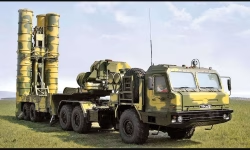Synopsis:
Pakistan Army Chief Asim Munir threatens Mukesh Ambani in has controversial and provocative remarks in Tampa, Florida, and warned of strikes on critical assets like the Jamnagar Refinery.
His speech combined religious symbolism, water-related threats over the Indus Waters Treaty, nuclear brinkmanship, and information warfare, signaling a shift in Pakistan’s strategy from purely military engagements to targeting economic and psychological vulnerabilities.
In the world of geopolitics, words can be as powerful as weapons—and sometimes just as dangerous. During a closed-door dinner in Tampa, Florida, Pakistan’s Army Chief Field Marshal Asim Munir delivered a fiery speech that has since rippled across strategic, economic, and diplomatic circles.
But this wasn’t your typical military rant. Asim Munir’s remarks carried religious undertones, nuclear threats, and direct warnings to India’s economic heart, particularly billionaire Mukesh Ambani. His statements hint at a shift in Pakistan’s conflict playbook—one where hitting economic icons may be just as important as battlefield victories.
Let’s unpack exactly what he said and why it matters.
Table of Contents
Asim Munir threatens Mukesh Ambani– The Economic Strike Doctrine
Asim Munir’s speech took a sharp turn when he referenced a tweet showing Surah Fil (a Quranic verse about divine justice) alongside a photo of Ambani. The message was symbolic and threatening.
According to him, the primary focus was Mukesh Ambani`s Reliance Industries’ Jamnagar Refinery, the world’s largest single-site refining complex. This wasn’t just about one company; it was about signaling that India’s economic crown jewels could be fair game in the event of conflict.
Pakistan Army Chief Field Marshal Syed Asim Munir has threatened Indian billionaire Mukesh Ambani during his ongoing visit to the US.
— DNA (@dna) August 11, 2025
Munir spoke about a social media post he authorised during the recent 4-day conflict with India, ThePrint reported.
The tweet included a… pic.twitter.com/QGQUwKn4zb
Weaponizing Water – The Indus Waters Treaty Flashpoint
Water has long been a sensitive issue between India and Pakistan, and Asim Munir wasted no time reigniting the debate. Responding to India’s decision to place the Indus Waters Treaty in abeyance, he issued a chilling warning:
“We will wait for India to build a dam, and when it does, phir 10 missile sey faarigh kar dengey” (We’ll destroy it with 10 missiles).
He claimed such an act could starve 250 million people, framing it as a humanitarian crisis, though the underlying message was clear: Pakistan is willing to escalate water disputes into direct military confrontation.
Nuclear Brinkmanship from American Soil
Perhaps the most dangerous part of Asim Munir’s speech was his nuclear warning:
“We are a nuclear nation. If we think we are going down, we’ll take half the world down.”
Such rhetoric isn’t new in South Asia—but saying it on U.S. soil adds a layer of diplomatic tension.
It’s rare for a Pakistani leader to issue such a statement abroad, and it risks straining ties with Washington while spiking global security concerns.
In a colorful metaphor, Asim Munir compared India to a Mercedes and Pakistan to a dump truck full of gravel. The point is Pakistan knows it can’t match India’s economic speed or military modernization, but it can still cause significant damage if provoked.
This reflects the asymmetry doctrine, where a weaker power uses unconventional means to disrupt a stronger opponent.
Operation Sindoor – The Battle for Narrative Control
Asim Munir also touched on the recent four-day conflict known as Operation Sindoor, criticizing India for not releasing casualty figures. He challenged New Delhi to go public, promising Pakistan would do the same.
This was less about transparency and more about information warfare—using selective disclosures to shape public opinion and influence the global narrative.
Also read about- Operation Sindoor: How India’s S-400 Shot Down 5 Pakistani Jets and 1 AEW&C/ELINT Aircraft: IAF chief calls S-400 a ‘Game-Changer’.
India's response to Asim Munir and the USA
India didn’t lash out in anger—it answered with calm but firm resolve. Officials sent a clear message, stressing the importance of sovereignty, strategic independence, and mutual respect. Through the media and official channels, India made it known that any kind of threat—direct or indirect—simply wouldn’t be accepted.
At the same time, it hinted at reshaping its partnerships, possibly strengthening ties with countries like France, Russia, and Japan. This wasn’t just a response—it was a strong reminder that India is now an active and confident player on the world stage.
#BREAKING: India hits out at Pakistan Army Chief Asim Munir for irresponsible statements from US soil threatening India and the world with nuclear threat. Says, it’s regrettable that such comments are made from a friendly third country. pic.twitter.com/kaBwWf8v15
— Aditya Raj Kaul (@AdityaRajKaul) August 11, 2025
The Bigger Picture: Realignment in Motion
These events point to a significant shift in the global geopolitical landscape. India is increasingly embracing a multi-vector diplomacy strategy—choosing to build and strengthen ties with multiple nations rather than placing its trust in just one ally. This allows New Delhi to maintain strategic flexibility and avoid being overly dependent on any single power bloc.
The targeting of Ambani’s refinery underscores a crucial reality: economic assets are no longer just commercial entities; they have become strategic targets in modern power play, capable of influencing national security and geopolitical leverage.
At the same time, India is becoming far more proactive in controlling the global narrative—challenging misinformation, putting forward its perspective, and ensuring its voice carries weight in shaping international opinion.
Why This Matters – Strategic Implications for India
Asim Munir’s speech wasn’t random; it was a blueprint of Pakistan’s evolving strategy. Here’s what it signals:
1. Economic Icons Are Now Strategic Targets: Assets like Jamnagar Refinery represent national pride and economic strength and must now be protected like critical defense infrastructure.
2. Water Could Be the Next Battlefield: With the Indus Waters Treaty in flux, India’s dams and irrigation systems may face increased strategic vulnerability.
3. Global Diplomacy Will Play a Bigger Role: Statements made abroad can sway international opinion. India must get ahead of the narrative to maintain diplomatic leverage.
4. A Multi-Layered Defense Is Non-Negotiable: Beyond military readiness, India must invest in cybersecurity, economic resilience, and strategic communication.
Conclusion – Beyond the Bluster
By invoking religious symbolism, threatening nuclear retaliation, and naming one of India’s most influential business leaders, Asim Munir has made it clear that the next phase of Indo-Pak tensions could be as much about economic disruption and psychological warfare as about tanks and fighter jets.
Operation Sindoor: How India’s S-400 Shot Down 5 Pakistani Jets and 1 AEW&C/ELINT Aircraft: IAF chief calls S-400 a ‘Game-Changer’.
The GeoLens – India || Defence || Global Affairs

Pratik Kondawale
Strategist | Indian Defence & Global Affairs
Founder of GeoLens.in, Pratik writes in-depth analysis on India’s defence strategy, military tech, and global power shifts delivering sharp insights through an Indian lens.


2 thoughts on “Asim Munir threatens Mukesh Ambani, issues nuclear warning, and vows to damage Indian projects on Indus River, heightening India’s security concerns.”